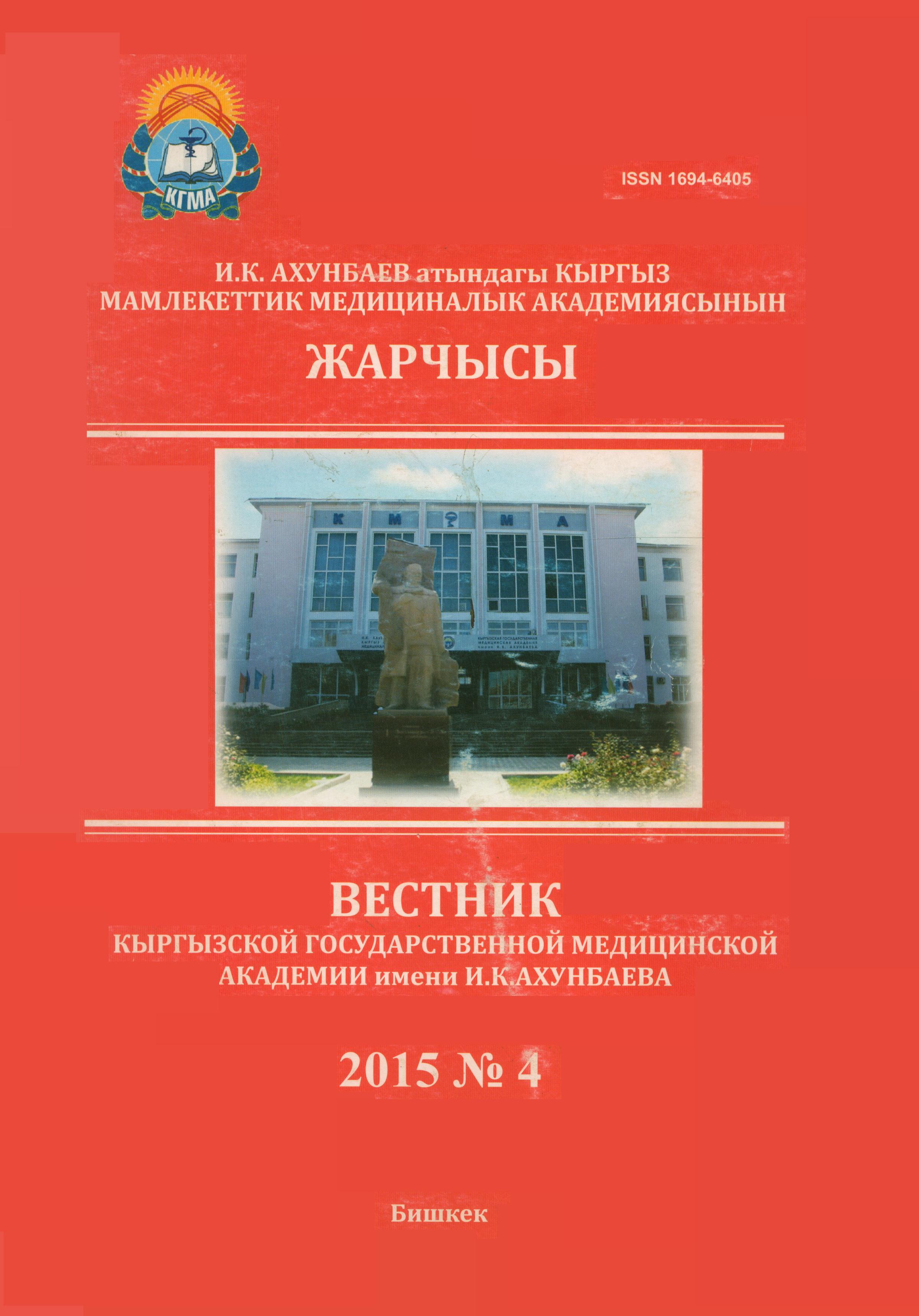ПОЛИМЕРИЗАЦИОННАЯ УСАДКА КОМПОЗИТНЫХ МАТЕРИАЛОВ КАК ФАКТОР, ОПРЕДЕЛЯЮЩИЙ КРАЕВУЮ АДАПТАЦИЮ МИКРОГИБРИДНЫХ ПЛОМБ (ОБЗОР ЛИТЕРАТУРЫ)
Аннотация
В данной статье рассматривается комплекс мер для снижения полимеризационного стресса микрогибридных композитов и улучшения краевого сцепления материалов с тканями зуба, что в свою очередь ведет к снижению таких неблагоприятных последствий лечения как пост оперативная чувствительность, краевое окрашивание пломбы и сколы реставраций.
Ключевые слова:
полимеризационная усадка, краевое прилегание, микрогибридные композиты.Библиографические ссылки
1. Дмитриева Л.А., Максимовский Ю.М. Терапевтическая стоматология.- Национальное руководство. – Москва, 2009. - 912 с.
2. Золотарева О. В. Оптимизация препарирования твердых тканей зубов при кариесе различными ротационными инструментами / дисс. …канд. мед.наук. - Москва, 2007.- 132 с.
3. Информационный бюллетень ВОЗ. - № 318, 2012.
4. Луцкая И.К. Фотоотверждаемые композиционные материалы в эстетическом реставрировании постоянных зубов. Современная стоматология. Международные обзоры: клиническая практика и здоровье № 3.- Минск, 2013.- С. 144-153.
5. Луцкая И.К. Пути минимизации последствий полимеризационной усадки композиционных материалов // Новое в стоматологии, № 1- 2012/ C 2-8
6. Максимовский Ю.М, Митронин А.В., Апарина Е.А. и др. Клиническая оценка пломбированных кариозных полостей по 1 классу с использованием различных технологий // Журнал «Стоматология для всех». – М., № 3. 2006. – С. 24-26.
7. Максимовский Ю.М. Максимовская Л.Н., Орехова Л.Ю. Терапевтическая стоматология - Москва, 2002.- C.193-213.
8. Николаев А. И., Цепов Л.М. Практическая терапевтическая стоматология: Учебное пособие/ М. 2008, 937, С 350-447
9. Николаенко С. А. Оценка полимеризационного стресса, возникающего при усадке композиционных пломбировочных материалов. «Институт стоматологии». 2004. № 2: С. 66–68.
10. Хидирбегишвили, О. Полимеризационная усадка композитов / О. Хидирбегишвили // Стоматолог. – 2006. − № 10. – С. 17−21.
11. Цепов Л.М., Т. М. Медведева, Г. И. Морозова и др. Медико-экономические аспекты выбора композитных материалов в условиях бюджетных стоматологических лечебно-профилактических учреждений /Maestro- 2(46),- 2012
12. André V. Ritter, Larissa M. Cavalcante,EdwardJ. SwiftEffect of light-curing method on marginal adaptation, microleakage, and microhardness of composite restorations.- Journal of Biomedical Materials Research v.78B, Issue 2, p. 302–311,2006
13. Anders Lindberg , J. W. V. van Dijken, P. Hörsted - In vivo interfacial adaptation of class II resin composite restorations with and without aflowable resin composite liner- Clinical oral investigation,-Volume 9, Issue 2, p. 77-83, 2005
14. Aw, T.C. Polymerization shrinkage of restorative resins using laser and visible light curing / T.C. Aw, J.I. Nicholls // J. Clin. Laser Med. Surg. – 1997. – Vol. 15, № 3. – P. 137–141.
15. Braga R.B.,Ballster N., Factors involved in the development of polymerization shrinkage stress in resin composites. A systematic review Dental Materials/p 962-970, 2005
16. Boer, W-M. Композитные реставрации: современный уровень техники / W-M. Boer // Новое в стоматологии. – 1999. − № 8. – С. 3−15.
17. Braga RR, Hilton TJ, Ferracane JL. Contraction stress of flowable composite materials and their efficacy as stress-relieving layers. J Am Dent Assoc 2003;134:721-8
18. Bichacho N. The centripetal build-up or composite resin posterior restorations. Pract PeriodonticsAesthet Dent 1994; 6:17-23.
19. Braga R.B., Ferracane J.L. Alternatives in Polymerization Contraction stress management. J Appl Oral Sci/ p.1-11, 2004
20. Davidson A., Felizer A/ Polymerization shrinkage stress in polymer-based restoratives / J Dent: p. 435-440, 1997
21. Davidson CL, De Gee AJ, Feilzer A. The competition between the composite-dentin bond strength and the polymerization contraction stress. J. Dent Res 1984;63:1396-9
22. Y. Finer, Santerre J. Salivary esterase activity and its association with the biodegradation of dental composites. JDR, p.22-26, 2004
23. Felizer A., Davidson Setting stress in composite in relation to configuration of the restoration J.Dent.Rest. p66, 1987
24. Figueiredo Reis A, Giannini M, Ambrosano GM, Chan DC. The effects of filling techniques and a low-viscosity composite liner on bond strength to class II cavities. J Dent. 2003;31:59-66.
25. Ivar A.R.,Mjor I.A., Dr. Odont « Clinical Diagnosis of recurrent caries» Jada Vol. 36, 2005
26. Jensen ME, Chan DCN. Polymerization shrinkage and microleakage. In: Vanherle G, Smith DC,editors. Posterior composite resin dental restorative materials. Utrecht, The Netherlands: Peter Szulc Publishing Co; 1985:243-62.
27. Koran P., Kurschner R.- Effects of sequential versus continuous irradiation of a light cured resin composite on shrinkage, viscosity, adhesion and degree of polymerization- J.DentBiom /p 140-141 ,2001
28. Kidd EA. Caries diagnosis within restored teeth. In: AnusaviceKJ, ed. Quality evaluation of dental restorations. Chicago: Quintessence;1989:111-21
29. Kidd EA. Microleakage: a review. J Dent 1976;4(5):199-206.
30. Koenigsberg S, Fuks A, Grajower R. The effect of three filling techniques on marginal leakage around class II composite resin restorations in vitro. Quintessence Int 1989;20:11721.
31. Klaff D. Blending incremental and stratified layering techniques to produce an esthetic posteriorcomposite resin restoration with a predictable prognosis. J Esthet Restor Dent 2001;13:101-13.
32. Lim R.S., Ferracane J. Reduction of polymerization contraction stress for dental composites by 2 step light activation/ Dental Materials, p436-444, 2002
33. Loguercio AD, Reis A, Ballester RY. Polymerization shrinkage: effects of constraint and filling technique in composite restorations. Dent Mater 2004;20:236-43.54.
34. Lutz F, Krejci I, Oldenburg TR. Elimination of polymerization stresses at the margins of posterior composite resin restorations: a new restorative technique. Quintessence Int 1986;17:777-84
35. Lutz F, Krejci I, Barbakow F. Quality and durability of marginal adaptation in bonded composite restorations. Dent Mater 1991;7:107-13.
36. Lutz F, Krejci I, Luescher B, Oldenburg TR. Improved proximal margin adaptation of class II composite resin restorations by use of light-reflecting wedges. Quintessence Int 1986;17:659-64.
37. Lutz F, Krejci I, Barbakow F. The importance of proximal curing in posterior composite resin restorations. Quintessence Int 1992;23:605-7.
38. Liebenberg WH. Successive cusp build-up: an improved placement technique for posterior direct resin restorations. J Can Dent Assoc 1996;62:501-7.
39. Liebenberg WH. The axial bevel technique: a new technique for extensive posterior resin compositerestorations. Quintessence Int 2000;31:231-9.
40. Mjor I.A., Toffenetti F. Secondary caries: a literature review with case reports,- Quintessence International2000 Mar;31(3):165-179 PubMed
41. Mjör IA, Gordan VV. Failure, repair, refurbishing and longevity of restorations. OperDent 2002; 27(5): 528-534
42. Munksgaard EC, Hansen EK, Kato H. Wall-to-wall polymerization contraction of composite resins versus filler content. Scand J Dent Res 1987;95:526-31.
43. McCullock AJ, Smith BG. In vitro studies of cuspal movement produced by adhesive restorative materials. Br Dent J 1986;161:405
44. Park J., Chang J. How should composite be layered to reduce shrinkage stress: incremental or bulk filling? Dent.Mater. p.1501-1505, 2008
45. SatelrhwaiteJ.,VogelK.,Watts D. Effect of resin composite filler particle size and shape on shrinkage strain PubMed
46. Segura A, Donly KJ. In vitro posterior composite polymerization recovery following hygroscopic expansion. J Oral Rehabil 1993;20:495-9.
47. Suliman AA, Boyer DB, Lakes RS. Cusp movement in premolars resulting from composite polymerization srinkage. Dent Mater 1993;9:6-10.
48. Spreafico RC, Gagliani M. Composite resin restorations on posterior teeth. In: Roulet JF, Degrange M.Adhesion: the silent revolution in dentistry. Chicago: Quintessence; 2000:253-76.
49. Tjan AH, Bergh BH, Lidner C. Effect of various incremental techniques on the marginal adaptation ofclass II composite resin restorations. J Prosthet Dent 1992;67:62-6.
50. Weaver WS, Blank LW, Pelleu GB Jr. A visible light activated resin cured through tooth structure. GenDent 1988;36:236-7.



